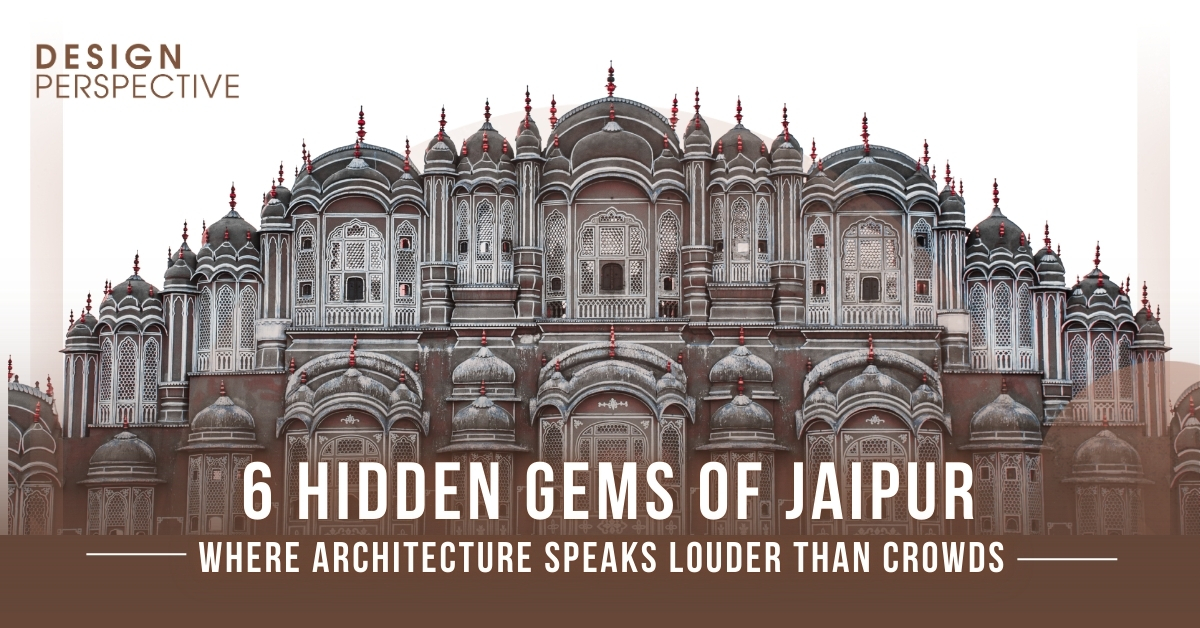When most people think of Jaipur, they picture its pink facades, grand forts, and bustling bazaars. But beyond the well-trodden tourist trail lies another Jaipur, one that whispers its history through lesser-known landmarks, quiet gardens, and weathered havelis. If you’re an architect, designer, or simply someone who finds joy in the quiet beauty of space, these are the places you shouldn’t miss.
1. Kesar Kyari Bagh
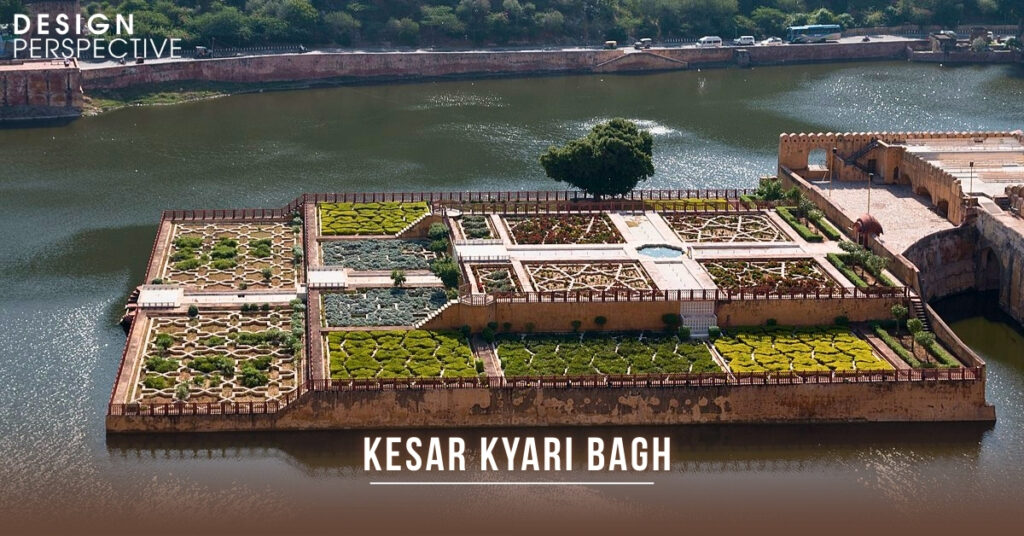
Floating on the serene waters of Maota Lake, the Kesar Kyari Bagh is a patterned garden that appears as though it’s been embroidered onto the lake itself. This Mughal-era marvel is a masterclass in symmetry, its intricate geometry perfectly aligned with the surrounding landscape. Viewed from the Amber Fort, the interplay of reflection and structure transforms the garden into a living ornament.
2. Kanak Vrindavan Valley
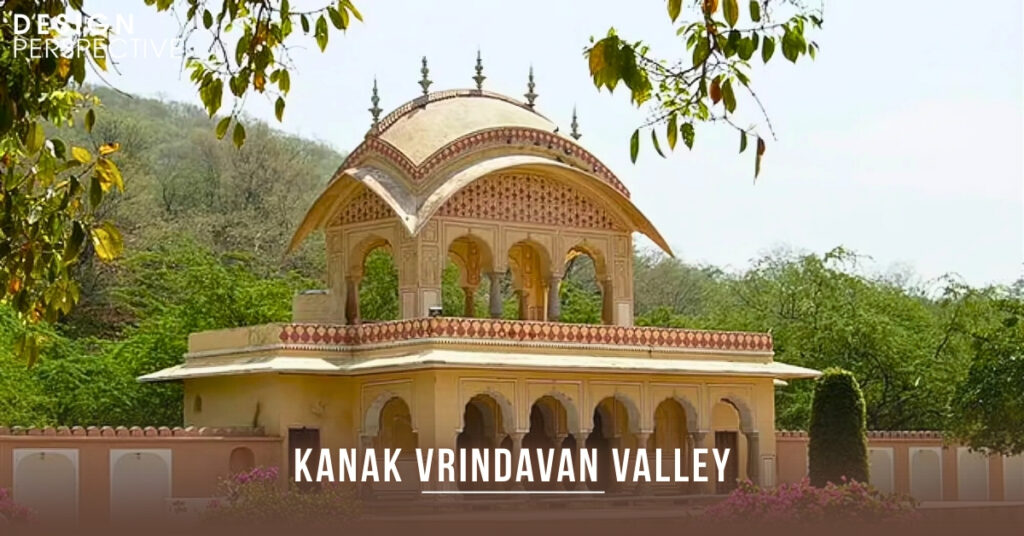
Nestled in a quiet valley, the Kanak Vrindavan Garden borrows both its name and spirit from the sacred town of Vrindavan. Designed with terraced lawns, marble fountains, and delicate chhatris, it merges architectural elegance with mythological inspiration. Here, the axial planning creates a seamless dialogue between built form and natural terrain, a place that feels like a film set, yet is deeply rooted in time.
3. Galta Ji Ka Mandir
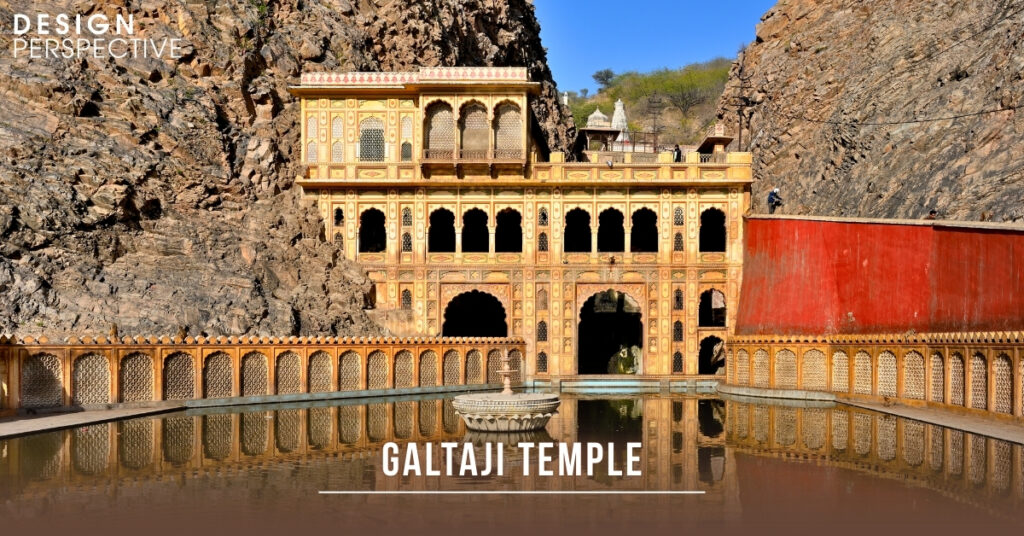
Carved into the rugged Aravalli Hills, this 18th-century temple complex is a layered composition of tiered courtyards, fresco-covered pavilions, and sacred kunds (water tanks). Rising organically from the rock, the temple integrates spirituality with site-responsive architecture. The soft pastel walls, weathered carvings, and resident monkeys add to its unique sense of place.
4. Raj Mandir Cinema
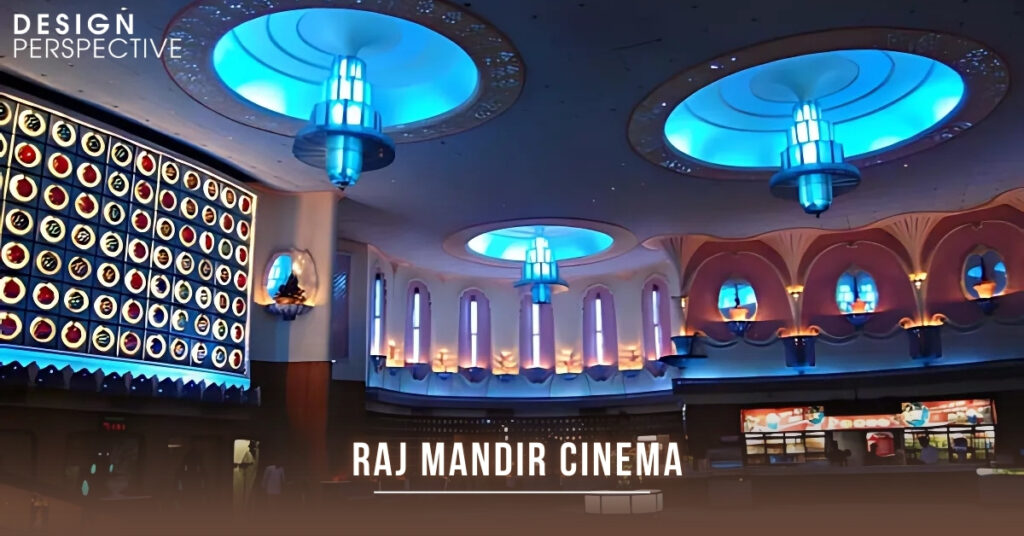
Inaugurated in 1976, Raj Mandir Cinema is more than a theatre; it’s an Art Deco spectacle. With its curvilinear façade, lotus-inspired interiors, and starry-ceiling auditorium, it transformed cinema-going into a grand architectural experience. Known as the “Pride of Asia,” Raj Mandir remains a cultural landmark where design and entertainment merge effortlessly.
5. Baradari Palace
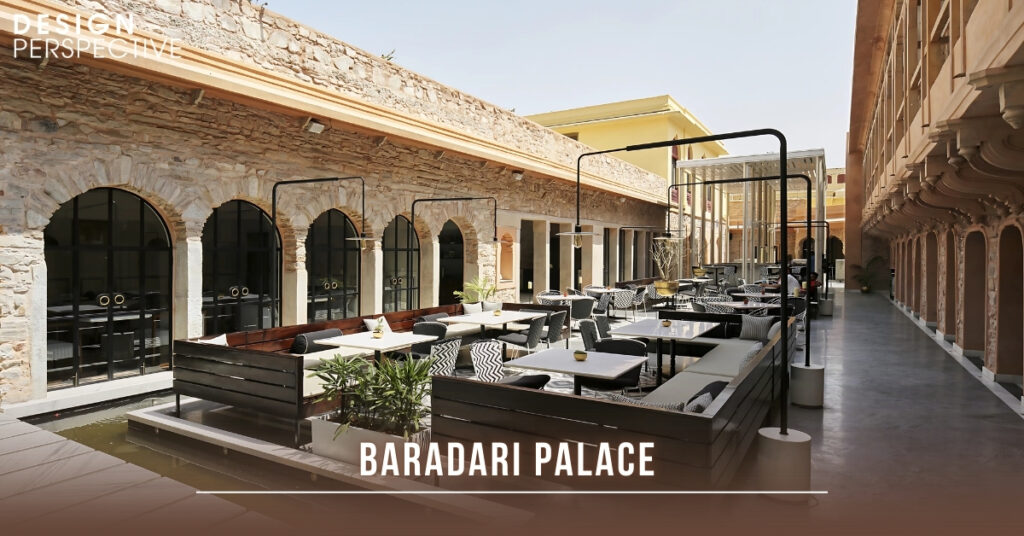
Once a royal pavilion within the City Palace complex, the Baradari Palace has been transformed by Studio Lotus into an elegant fine-dining café. The term Baradari refers to a structure with twelve columns, and here, they frame a neoclassical pavilion paved with Italian marble.
Studio Lotus approached the restoration with a philosophy of “designing without erasing,” preserving historical details while introducing contemporary usability. They reinstated traditional proportions, revived intricate inlays, and integrated modern services discreetly. The result is a space that embodies adaptive reuse at its finest, breathing new life into Jaipur’s historic urban core without losing its soul.
6. The 18th Centuary Blue-Green Haveli
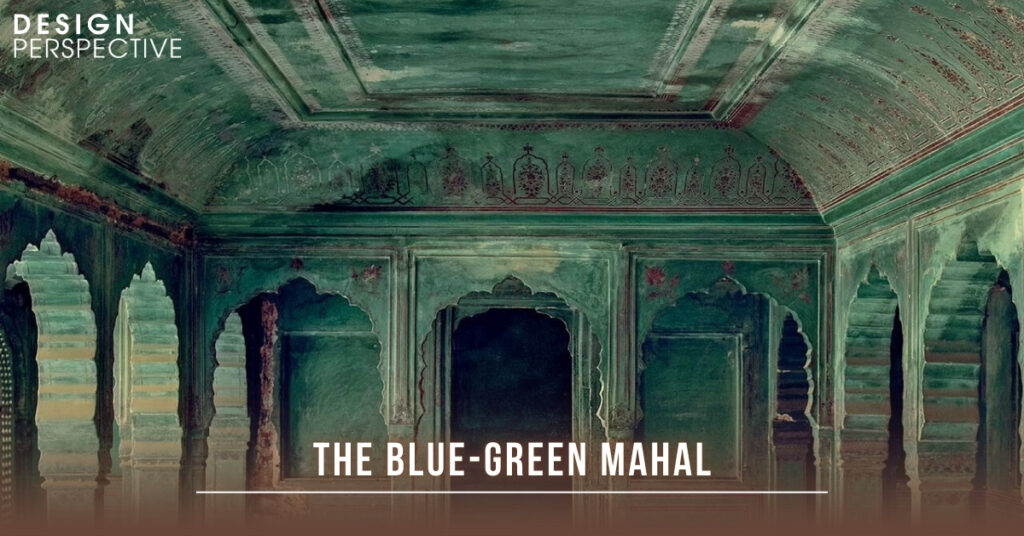
Hidden in a quiet residential lane, this fading haveli still carries traces of frescoes, scalloped arches, and pigmented lime plaster. Its unusual teal-green and indigo tones stand apart from Jaipur’s signature pink, hinting at the city’s lesser-known color palette. Time has softened its surfaces, but its craftsmanship remains a reminder of a more intimate architectural era.
A Fun Fact to End On

Jaipur has made history by becoming the only Indian city to rank among the world’s top five travel destinations for 2025, according to Travel + Leisure’s World’s Best Awards.
Looking at Jaipur Through a Designer’s Lens
At Design Perspective Jaipur, we see these spaces not just as locations, but as living conversations between history, material, and culture. If you’re curious to explore how Jaipur is evolving beyond its famous pink, join us in decoding the city’s design layers.
📍 Register now to be part of the dialogue.

